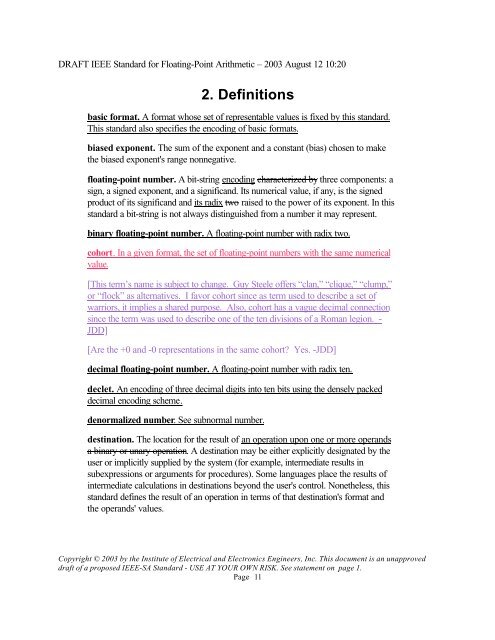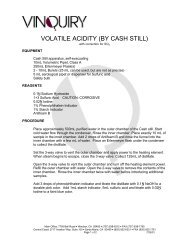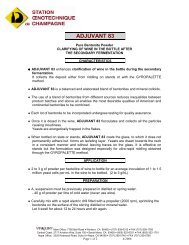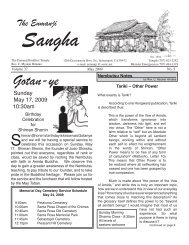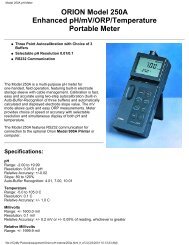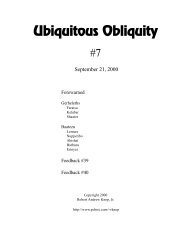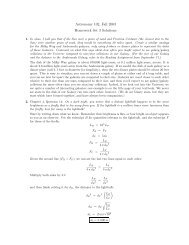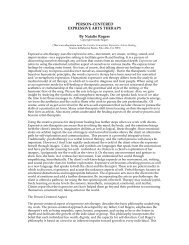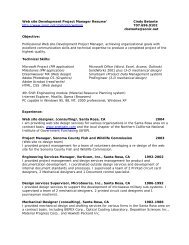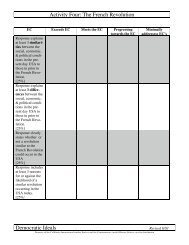DRAFT IEEE Standard for Binary Floating-Point Arithmetic - Sonic.net
DRAFT IEEE Standard for Binary Floating-Point Arithmetic - Sonic.net
DRAFT IEEE Standard for Binary Floating-Point Arithmetic - Sonic.net
You also want an ePaper? Increase the reach of your titles
YUMPU automatically turns print PDFs into web optimized ePapers that Google loves.
<strong>DRAFT</strong> <strong>IEEE</strong> <strong>Standard</strong> <strong>for</strong> <strong>Floating</strong>-<strong>Point</strong> <strong>Arithmetic</strong> – 2003 August 12 10:20<br />
2. Definitions<br />
basic <strong>for</strong>mat. A <strong>for</strong>mat whose set of representable values is fixed by this standard.<br />
This standard also specifies the encoding of basic <strong>for</strong>mats.<br />
biased exponent. The sum of the exponent and a constant (bias) chosen to make<br />
the biased exponent's range nonnegative.<br />
floating-point number. A bit-string encoding characterized by three components: a<br />
sign, a signed exponent, and a significand. Its numerical value, if any, is the signed<br />
product of its significand and its radix two raised to the power of its exponent. In this<br />
standard a bit-string is not always distinguished from a number it may represent.<br />
binary floating-point number. A floating-point number with radix two.<br />
cohort . In a given <strong>for</strong>mat, the set of floating-point numbers with the same numerical<br />
value.<br />
[This term’s name is subject to change. Guy Steele offers “clan,” “clique,” “clump,”<br />
or “flock” as alternatives. I favor cohort since as term used to describe a set of<br />
warriors, it implies a shared purpose. Also, cohort has a vague decimal connection<br />
since the term was used to describe one of the ten divisions of a Roman legion. -<br />
JDD]<br />
[Are the +0 and -0 representations in the same cohort? Yes. -JDD]<br />
decimal floating-point number. A floating-point number with radix ten.<br />
declet. An encoding of three decimal digits into ten bits using the densely packed<br />
decimal encoding scheme .<br />
denormalized number. See subnormal number.<br />
destination. The location <strong>for</strong> the result of an operation upon one or more operands<br />
a binary or unary operation. A destination may be either explicitly designated by the<br />
user or implicitly supplied by the system (<strong>for</strong> example, intermediate results in<br />
subexpressions or arguments <strong>for</strong> procedures). Some languages place the results of<br />
intermediate calculations in destinations beyond the user's control. No<strong>net</strong>heless, this<br />
standard defines the result of an operation in terms of that destination's <strong>for</strong>mat and<br />
the operands' values.<br />
Copyright © 2003 by the Institute of Electrical and Electronics Engineers, Inc. This document is an unapproved<br />
draft of a proposed <strong>IEEE</strong>-SA <strong>Standard</strong> - USE AT YOUR OWN RISK. See statement on page 1.<br />
Page 11


